Related Research Articles
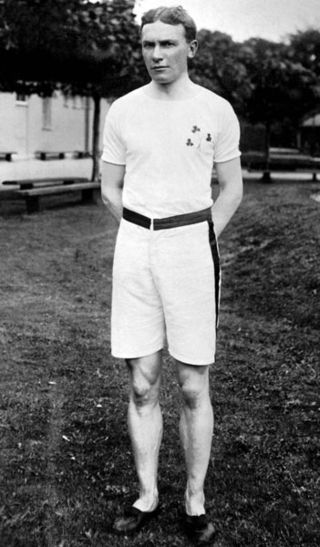
Robert Kerr was an Irish Canadian sprinter. He won the gold medal in the 200 metres and the bronze medal in the 100 metres at the 1908 Summer Olympics.

The Canadian Grenadier Guards (CGG) is a reserve infantry regiment in the 34 Canadian Brigade Group, 2nd Canadian Division, of the Canadian Army. The regiment is the oldest and second-most-senior infantry regiment in the Primary Reserve of the Canadian Army. Located in Montreal, its main role is the provision of combat-ready light infantry troops in support of Canadian regular infantry. It is a Household Foot Guard regiment and also provides soldiers for public ceremonial duties, performing similar ceremonial duties as the Guards regiments of the British Army. This primarily entails mounting the guard at Government House, the King's and Governor General's residence, and performing the "Changing the Guard" ceremony on Parliament Hill in Ottawa, a task it shares with Canada's senior Household Foot Guard regiment, the Governor General's Foot Guards of Ottawa. The Canadian Grenadier Guards is an allied regiment to the British Grenadier Guards.
The Canadian Expeditionary Force (CEF) was the expeditionary field force of Canada during the First World War. It was formed following Britain’s declaration of war on the German Empire on 15 August 1914, with an initial strength of one infantry division. The division subsequently fought at Ypres on the Western Front, with a newly raised second division reinforcing the committed units to form the Canadian Corps. The CEF and corps was eventually expanded to four infantry divisions, which were all committed to the fighting in France and Belgium along the Western Front. A fifth division was partially raised in 1917, but was broken up in 1918 and used as reinforcements following heavy casualties.

The Royal Hamilton Light Infantry (Wentworth Regiment) (RHLI) is a Primary Reserve infantry regiment of the Canadian Army, based at John Weir Foote VC Armoury in Hamilton, Ontario. The RHLI is part of 31 Canadian Brigade Group, which is part of 4th Canadian Division.
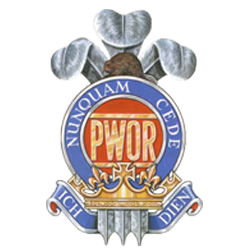
The Princess of Wales' Own Regiment (PWOR) is a Primary Reserve infantry regiment of the Canadian Army.

The Royal Winnipeg Rifles are a Primary Reserve one-battalion infantry regiment of the Canadian Army. Nicknamed the "Little Black Devils", they are based at Minto Armoury in Winnipeg, Manitoba. The Royal Winnipeg Rifles are part of 3rd Canadian Division's 38 Canadian Brigade Group.
The 205th (Tiger) Battalion, CEF was a unit in the Canadian Expeditionary Force during the First World War. Established in late 1915, it was stationed in Hamilton, Ontario and began recruiting toward the end of February 1916. In late 1916, the unit was redesignated a machine gun battalion, but a few months later, in April 1917, the 205th (Tiger) Battalion was broken up for drafts. One company was transferred to the 164th Battalion, CEF, which was recruiting in nearby Halton County. The unit continued to exist as the 205th Machine Gun Depot and then the 205th Machine Gun School.
The 123rd Battalion, Royal Grenadiers, CEF was a unit in the Canadian Expeditionary Force during the First World War. Based in Toronto, Ontario, they began recruiting in November 1915. After arriving in England, they continued to train as an infantry battalion for several months, but just before mobilizing to France in January 1917, the battalion was redesignated the 123rd Pioneer Battalion, Royal Grenadiers, CEF.

The 133rd Battalion, CEF was a unit in the Canadian Expeditionary Force during the First World War.

The 199th Battalion, CEF was a unit in the Canadian Expeditionary Force (CEF) during the First World War.
The 202nd (Sportsmens) Battalion, CEF was a unit in the Canadian Expeditionary Force during the First World War. Based in southside Edmonton, Alberta, the unit began recruiting during the winter of 1915/16 in that city and surrounding district. It was formally authorized on July 15, 1916. Its headquarters were in the Sheppard Block at 10316 Whyte Avenue.
The 237th Battalion, CEF was a unit in the Canadian Expeditionary Force during the First World War. Based in Sussex, New Brunswick, the unit began recruiting in the Spring of 1916 in Military Districts 4, 5, 6, and 7 and was one of several "American" battalions in the CEF. The unit was disbanded while still in Canada and its men transferred to the 97th Battalion, CEF. The 237th Battalion, CEF had one Officer Commanding: Lieut-Col. C. S. Bullock.
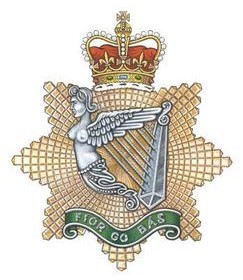
The Irish Regiment of Canada is a Primary Reserve infantry regiment of the Canadian Army based in Sudbury, Ontario. It is part of the 4th Canadian Division's 33 Canadian Brigade Group. Currently one battalion of the regiment exists.

Battalion Park is a geoglyph site in southwest Calgary, Alberta, Canada. It is located on Signal Hill, overlooking the Tsuu T'ina Nation, as well as lands formerly known as Camp Sarcee and later Sarcee Training Area, a military reserve used by the Canadian Forces from before the First World War up until the 1990s. The park extends over an area of 93 hectares, north of the Elbow River. Its heritage value is associated with its dedication to the heroic efforts of Albertan soldiers during the First World War.
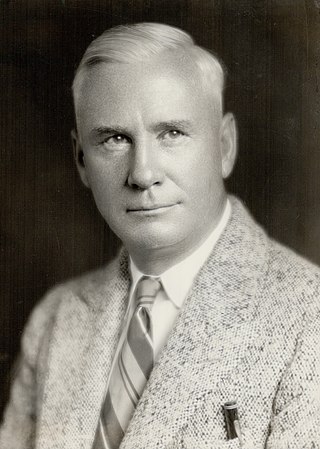
Lewis Edwin Marsh was a Canadian athlete and referee, and one of the pioneers of sports journalism in Canada, working at the Toronto Star for 43 years.

Permanent Active Militia (PAM), also known as Permanent Force (PF), was the proper name of Canada's full-time professional land forces from 1855 to 1940, when it was reorganized into the Canadian Army. PAM was in effect Canada's standing army, consisting of one regular infantry regiment and two cavalry regiments in 1914.
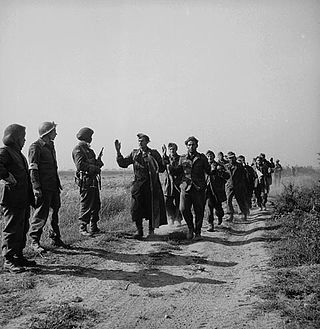
The 8th Canadian Infantry Brigade was an infantry brigade of the Canadian Army that saw active service during World War I and World War II as part of the 3rd Canadian Infantry Division. The brigade fought on the Western Front during World War I from December 1915 to November 1918, and in Normandy and north-west Europe in 1944–1945 during World War II. It was a square formation of four infantry battalions during World War I, but was reduced to a triangular formation of three battalions during World War II.

The Victoria Rifles of Canada was an infantry regiment of the Non-Permanent Active Militia of the Canadian Militia and later the Canadian Army. First formed in Montreal, Quebec in 1862, the regiment would see a history of service stretching from the Fenian Raids of the 1860s-70s right into the middle of the 20th Century. In 1965, the regiment was reduced to nil strength and transferred to the Supplementary Order of Battle.
24th Battalion may refer to:
The Otter Commission, or Otter Committee, was established after the First World War to tackle a problem created by the chaotic mobilization of the Canadian Expeditionary Force. In 1919 units of the CEF, intended as a wartime expeditionary force, returned to Canada where the Canadian Militia had served during the war performing home defence duties, staffing internment camps, and raising recruits for overseas. Both the CEF and the Militia desired to be perpetuated in the post-war world. The CEF units were proud of their wartime record, while the pre-war Militia had long-standing roots in the community and battle honours dating back as far as the War of 1812.
References
- Meek, John F. Over the Top! The Canadian Infantry in the First World War. Orangeville, Ont.: The Author, 1971.